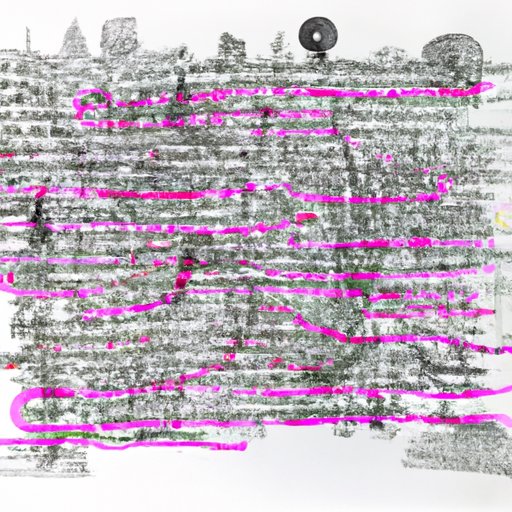Introduction
Modernist writing is an important literary movement that emerged in Europe and America during the early 20th century. It was a response to the rapid changes that were occurring in society due to industrialization, urbanization, and technological advances. Modernist writers sought to express their experience of the modern world through experimental forms of literature. In this article, we will explore seven key characteristics of modernist writing.
Stream of Consciousness
The first characteristic of modernist writing is “stream of consciousness”, which is a technique used by authors to convey the thoughts, feelings, and experiences of their characters. This technique was pioneered by James Joyce, who wrote Ulysses (1922), a novel that follows the interior monologue of its protagonist, Leopold Bloom, throughout a single day. Other examples of stream of consciousness can be found in Virginia Woolf’s Mrs. Dalloway (1925) and To the Lighthouse (1927).
Fragmentation
Another common feature of modernist writing is fragmentation, which is the breaking up of a story into small, disconnected parts. This technique was popularized by T.S. Eliot’s poem The Waste Land (1922), which is composed of several short sections that are linked together by allusions and images. Other examples of fragmentation can be found in Gertrude Stein’s The Making of Americans (1925) and William Faulkner’s As I Lay Dying (1930).
Unconventional Narrative Structures
Modernist writers often employed unconventional narrative structures in their works. This could include using multiple narrators, shifting perspectives, or non-linear timelines. Examples of this technique can be found in Virginia Woolf’s To the Lighthouse (1927), which uses multiple narrators to tell the story; James Joyce’s Ulysses (1922), which employs shifting perspectives; and William Faulkner’s As I Lay Dying (1930), which features a non-linear timeline.
Juxtaposition
Another characteristic of modernist writing is the use of juxtaposition, which is the placement of two seemingly contrasting elements side-by-side for effect. This technique was used by T.S. Eliot in The Waste Land (1922), where he juxtaposes images of death and decay with those of rebirth and renewal. Other examples of juxtaposition can be found in Ezra Pound’s The Cantos (1917) and Gertrude Stein’s The Making of Americans (1925).
Rejection of Traditional Values and Institutions
Modernist writers often rejected traditional values and institutions that had been established in the 19th century. This could include challenging religious beliefs, questioning gender roles, and criticizing the aristocracy. Examples of this can be seen in James Joyce’s Ulysses (1922), which critiques the Catholic Church; Virginia Woolf’s A Room of One’s Own (1929), which challenges traditional gender roles; and D.H. Lawrence’s Lady Chatterley’s Lover (1928), which satirizes the British upper class.
Intertextuality
Modernist writers also employed intertextuality, which is the use of references to other texts within a work. This technique was used by T.S. Eliot in The Waste Land (1922), which contains allusions to various classical and religious texts. Other examples of intertextuality can be found in James Joyce’s Ulysses (1922) and Ezra Pound’s The Cantos (1917).
Experimentation with Language
Finally, modernist writers experimented with language in order to explore new ways of expressing themselves. This could include using unusual words, neologisms, or foreign phrases. Examples of this can be seen in James Joyce’s Ulysses (1922), which features a mix of English, Irish dialects, and Latin; T.S. Eliot’s The Waste Land (1922), which contains numerous neologisms; and Gertrude Stein’s The Making of Americans (1925), which incorporates French phrases.
Conclusion
In conclusion, modernist writing is characterized by several distinct features, including stream of consciousness, fragmentation, unconventional narrative structures, juxtaposition, rejection of traditional values and institutions, intertextuality, and experimentation with language. These techniques allowed modernist writers to explore new ways of expressing their experiences of the modern world. For more information on modernist writing, please consult the additional resources listed below.
Additional Resources
Gillespie, Michael Patrick. Understanding Modernism. University of South Carolina Press, 2005.
Kermode, Frank. The Sense of an Ending: Studies in the Theory of Fiction. Oxford University Press, 2000.
Levenson, Michael H. A Genealogy of Modernism: A Study of English Literary Doctrine 1908-1922. Cambridge University Press, 1984.
Miller, J. Hillis. Literature as System: Essays Toward the Theory of Literary History. Princeton University Press, 1971.
Puchner, Martin. The Norton Anthology of Theory and Criticism. W.W. Norton & Company, 2010.
(Note: Is this article not meeting your expectations? Do you have knowledge or insights to share? Unlock new opportunities and expand your reach by joining our authors team. Click Registration to join us and share your expertise with our readers.)
